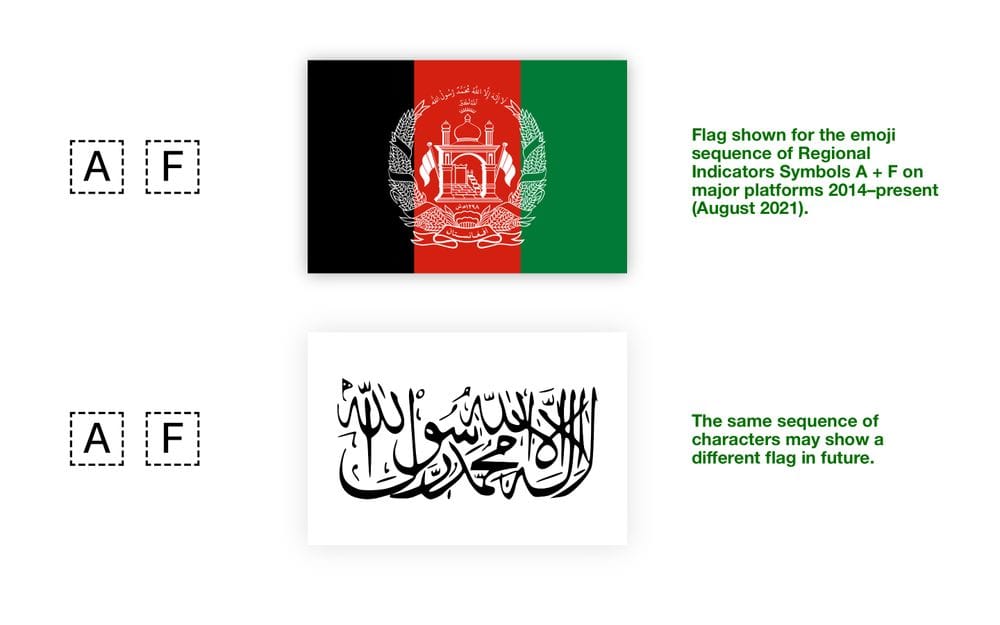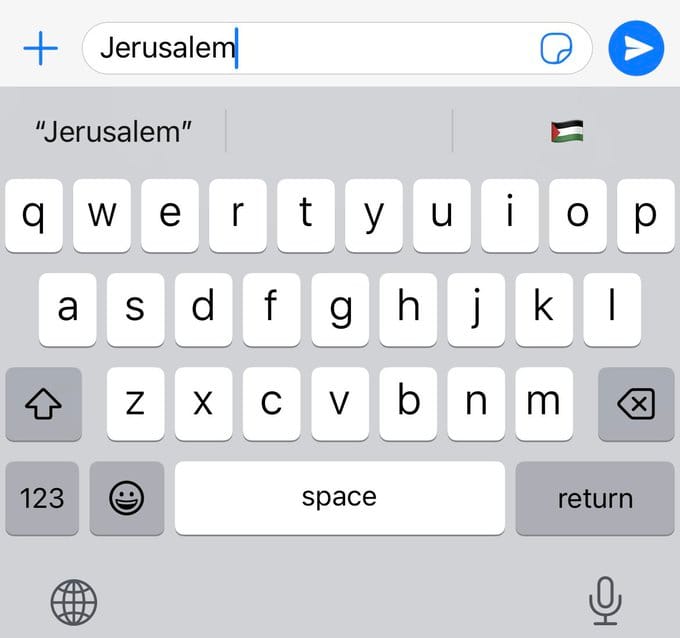The politics of flag emojis

For years, tribes have used visual symbols to identify themselves and unite people behind shared values. This practice began with painted symbols and evolved to include flags following the invention of silk. Flags often tell the story of the nation state or group they represent, and change over time to reflect shifting realities. With the rise of the internet, flags naturally found their way online in the form of emojis, continuing their role as powerful identifiers in the digital age.
Contrary to what some people think, adding new flag emojis is not as simple as creating a small-sized version of the flag. National flag emojis are based on the two letter, ISO 3166-1 country codes, which refer to an international code for states around the world. So for example, the ISO 3166-1 for Malta is 'MT'. These codes are also typically used in 'top-level domains' such as .de, .mt, etc.
A non-profit organisation based in the US, the Unicode Consortium, is responsible for these types of codes and flags. In the 1990s, there were only ten flag emojis: 🇨🇳 🇩🇪 🇪🇸 🇫🇷 🇬🇧 🇮🇹 🇯🇵 🇰🇷 🇷🇺 🇺🇸, used by two Japanese mobile carriers. When the Consortium stepped up to ensure compatibility between carriers around the world, it was decided that the ISO 3166 would be used as the source for flag emojis. This ensured that every nation state recognised by the United Nations, gets its own flag emoji. There are exceptions as well - Antarctica has its own ISO 3166 code - 'AQ', and its own flag emoji - 🇦🇶!
In 2022, the Unicode Consortium's Emoji Subcommittee stopped accepting new flag proposals. This decision was prompted by the growing demand for diverse flags, including regional, and Pride flags. The Subcommittee cited the dynamic nature of flags and concerns about exclusivity as key reasons for this decision, stating that flags "don't stand still, are constantly evolving, and due to the open-ended nature of flags, the addition of one creates exclusivity at the expense of others".
It is now up to platforms, such as Apple and Google, to associate a flag tied to that specific country code, and update the design of the flag when there is consensus to do so.
Conflicts emerge, however, when geopolitical realities on the ground change, but not everyone agrees with this shift. The ongoing controversy surrounding Afghanistan's flag emoji is one example.
In 2021, following the collapse of the Islamic Republic of Afghanistan, the Taliban-led de facto government introduced a new flag for their Islamic Emirate of Afghanistan. However, many digital platforms continue to display the flag emoji of the former Islamic Republic. The default flag emoji for Afghanistan, associated with its ISO 3166 code 'AF', will likely remain unchanged until a broad consensus emerges on the need for its update.

This of course is an issue for platform owners because they would not want to get into geopolitical issues that could hurt them as a company. Microsoft encountered a similar problem during the release of Windows 95. The operating system used official UN maps, which India disputed. As a result, India threatened to block the release of Windows 95 within its borders unless Microsoft addressed this cartographic discrepancy.
On the other hand, changes in flag emojis that are not controversial, such as Mauritania adding a red band at the top and the bottom of its flag in 2017, are usually included relatively quickly by platform owners.
It is therefore a very slow process for these platforms to change the flag of an ISO 3166-1 country code or regional/territorial places.
There is another issue that could come up when platforms change the flag of a country. As flag emojis are based on the two-letter ISO 3166 code, any previous messages that were sent with the older version of the flag will show up with the new version of the flag. This could lead to confusion and unintended consequences for the sender.
Something as simple as: "I support Afghanistan 🇦🇫", where a user is showing support to the Islamic Republic of Afghanistan (pre-Taliban), would now indicate support for the Taliban-led government.
A more recent example that landed Apple Inc. in hot water, was the automatic suggestion of the Palestinian flag emoji when users typed 'Jerusalem' on their iPhones. This took place a few months after the 7 October Hamas attack on Israel, and of course did not go well with people who viewed this as an anti-Israel attack on a city claimed by both the Palestinians and the Israelis.
Apple initially claimed the issue was unintended and promised future software updates would address it. However, the controversy escalated rapidly, prompting the tech company to release a patch within days. This update removed the automatic display of the Palestinian flag emoji when users typed 'Jerusalem'.

In the next few years, it’ll be interesting to see how geopolitics will continue to impact the world of flag emojis on our online chats.